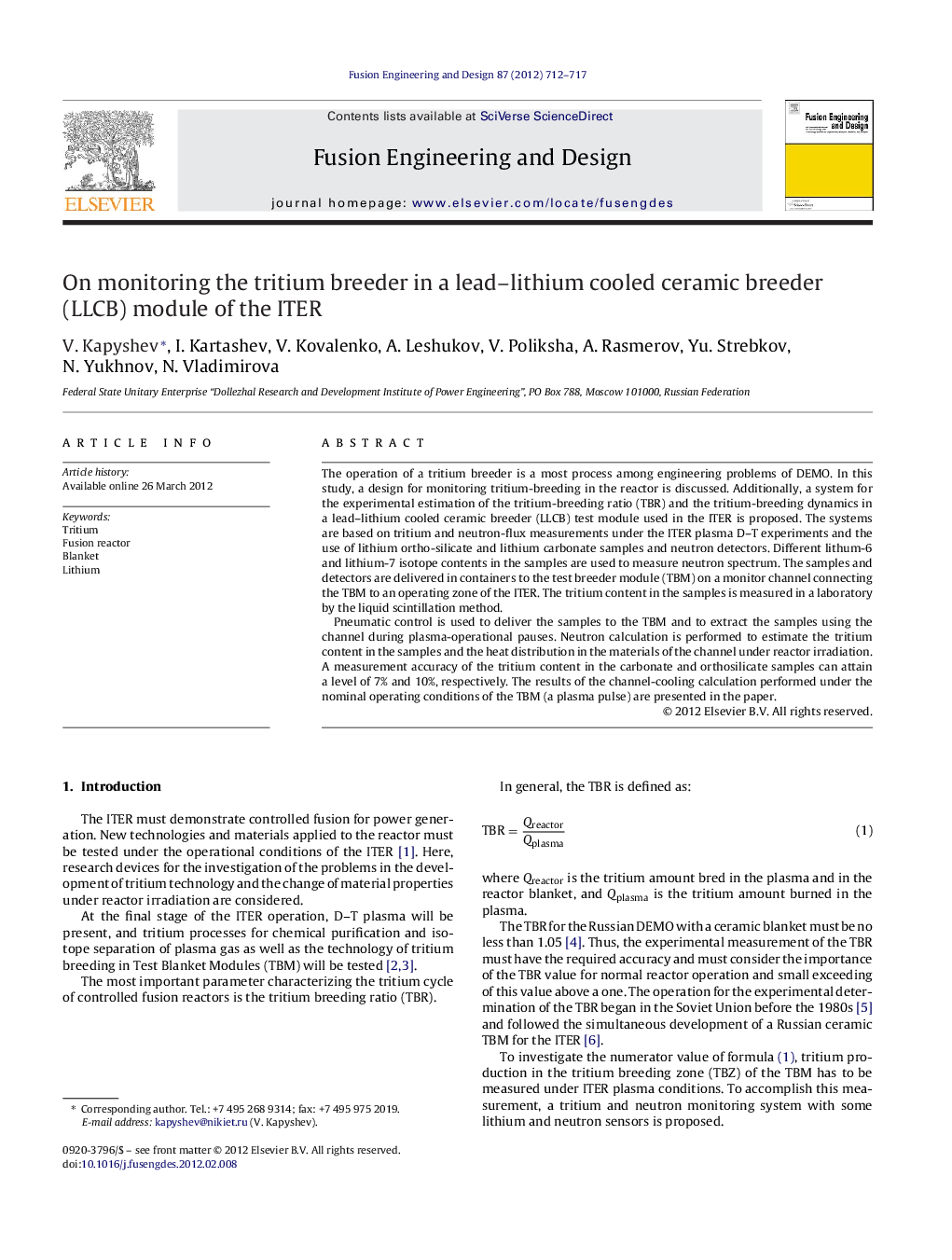| Article ID | Journal | Published Year | Pages | File Type |
|---|---|---|---|---|
| 272257 | Fusion Engineering and Design | 2012 | 6 Pages |
The operation of a tritium breeder is a most process among engineering problems of DEMO. In this study, a design for monitoring tritium-breeding in the reactor is discussed. Additionally, a system for the experimental estimation of the tritium-breeding ratio (TBR) and the tritium-breeding dynamics in a lead–lithium cooled ceramic breeder (LLCB) test module used in the ITER is proposed. The systems are based on tritium and neutron-flux measurements under the ITER plasma D–T experiments and the use of lithium ortho-silicate and lithium carbonate samples and neutron detectors. Different lithum-6 and lithium-7 isotope contents in the samples are used to measure neutron spectrum. The samples and detectors are delivered in containers to the test breeder module (TBM) on a monitor channel connecting the TBM to an operating zone of the ITER. The tritium content in the samples is measured in a laboratory by the liquid scintillation method.Pneumatic control is used to deliver the samples to the TBM and to extract the samples using the channel during plasma-operational pauses. Neutron calculation is performed to estimate the tritium content in the samples and the heat distribution in the materials of the channel under reactor irradiation. A measurement accuracy of the tritium content in the carbonate and orthosilicate samples can attain a level of 7% and 10%, respectively. The results of the channel-cooling calculation performed under the nominal operating conditions of the TBM (a plasma pulse) are presented in the paper.
